A feed of recent articles relating to Climate Change from The Daily Climate.
8 May 2024.
Spanish-speaking residents feel left out of permitting process at massive Exxon petrochemical plant in Houston-area – 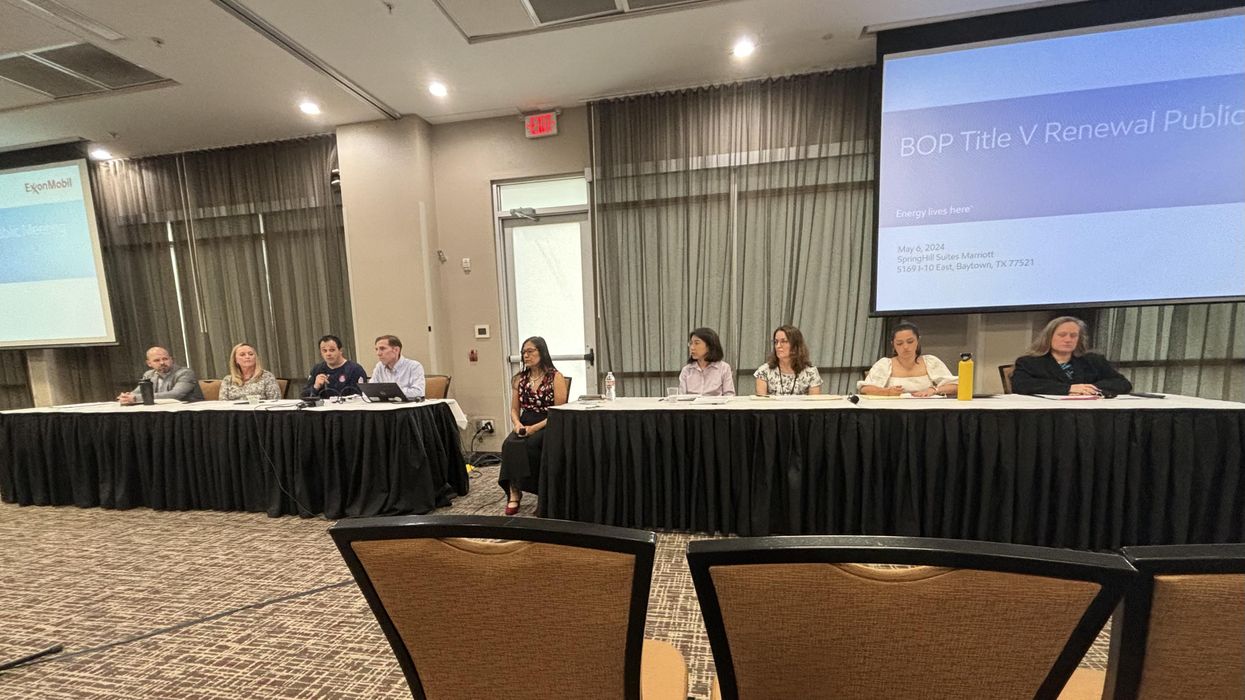
BAYTOWN, TX — As Exxon Mobil moves forward with federal re-permitting for its massive petrochemical complex in the Houston area, residents remain frustrated with the lack of accessibility and Spanish-language outreach from the state and company.
At issue is Exxon Mobil’s application for its Baytown Olefins Plant permit, which must be approved by the the Texas Commision on Environmental Quality every five years to continue operations.
To read a version of this story in Spanish click here. Haz clic aquí para leer este reportaje en español.
The olefins plant — which produces about 10 billion pounds of petrochemical products annually — is part of Exxon’s petrochemical complex in Baytown, which includes the nation’s third-largest refinery. The renewal has been contested by residents and activists due to pollution concerns and 12 consecutive quarters of Clean Air Act violations at the Exxon Mobile Baytown Complex. If approved, the permit would allow the facility to operate for the next five years.
In addition to pollution, residents have expressed concern over community access to meeting and permitting information, especially for Spanish-speaking residents. The U.S. census estimates that 52.2% of Baytown’s population is Latino and 44.8% of Harris County speaks Spanish. That rate is higher in communities that border industry on the Houston Ship Channel, as high as 68% in some locations.
A public hearing this week — the second in as many months — was held for community members to bring comments or questions to Exxon Mobil or the TCEQ.
At the previous hearing community residents brought up concerns about the meeting notice not being published in Spanish on the TCEQ’s site. TCEQ attorney Amy Browning said that the reconvening was a result of the agency’s failure to “publish (the meeting notice) in Spanish electronically on the commission’s site.”
In addition to the original meeting notice not being published in Spanish, Texas Environmental Justice Advocacy Services, or TEJAS, representative Deyadira Arellano pointed out at both meetings that Exxon’s slides related to their plant operations are not translated to Spanish. At this week’s meeting, Exxon approached her in the break period to offer slides in Spanish to her email. However, Arellano said that her frustration resided with the TCEQ.

“The TCEQ should preview these materials ahead of time,” said Arellano. “It is important to ensure meaningful engagement efforts are inclusive and accessible to all diverse members of our communities.”
Exxon’s Public and Government Affairs Manager Aaron Stryk said that they are “continuously working to improve their Spanish language communications” and do provide Baytown-related communications updates in English and Spanish.
“It is important to ensure meaningful engagement efforts are inclusive and accessible to all diverse members of our communities.” - Deyadira Arellano, TEJAS
The TCEQ publishes all public comments and addresses each of them during the permitting process. English-speaking individuals have access to a digital comment interface 24/7 to comment on the permit while the comment period is open. However, Spanish speakers have no accessibility tools provided from the TCEQ to help navigate the English-only interface. Many have to opt to comment in person or mail in their comments and then have their comments translated, according to TCEQ Attorney Christyn Cavasos.
TEJAS has long advocated for better accessibility for Spanish speakers from the TCEQ. The state agency has a history of neglecting Latino and Spanish speaking communities in their outreach, including important air pollution monitoring information.
The permit will undergo a revision phase if needed after the comments have been finalized. Following the revision, the TCEQ will submit the permit to the EPA which has 45 days to reject it. If applicable, emissions units must comply with new federal regulations.
8 May 2024.
Residentes hispanohablantes de Baytown se sienten excluidos del proceso de permisos de la masiva planta petroquímica de Exxon – 
BAYTOWN, TX — Mientras ExxonMobil avanza en la reautorización del permiso de operación federal para su enorme complejo petroquímico en el área de Houston, los residentes siguen frustrados con la brecha de accesibilidad y divulgación en español por parte del estado y la compañía.
Sobre la mesa está la aplicación del permiso de ExxonMobil para su planta de Olefinas de Baytown, que debe ser aprobado por la Comisión por la Calidad Ambiental de Texas (TCEQ por sus siglas en inglés) cada cinco años para que la planta continúe operando.
Haz clic aquí para leer este reportaje en inglés. To read a version of this story in English click here.
La planta de olefinas— que produce 10 mil millones de libras de productos petroquímicos anualmente — es parte del complejo petroquímico de Exxon en Baytown, que incluye la tercera refinería más grande del país. La renovación ha sido impugnada por residentes y activistas preocupados por la contaminación y por los 12 trimestres consecutivas de violaciones de la Ley del Aire Limpio por parte del complejo de ExxonMobil en Baytown. Si se aprueba, el permiso permitirá que el complejo industrial opere durante los próximos cinco años.
Además de la contaminación, los residentes han expresado su preocupación por el acceso de la comunidad a la información sobre reuniones y permisos, especialmente para los residentes hispanohablantes. El censo de los Estados Unidos estima que el 52,2% de la población de Baytown es latina y el 44,8% del condado de Harris habla español. Esa tasa es mayor en las comunidades que bordean a la industria en el Canal de Navegación de Houston, y alcanza hasta un 68% en algunas localidades.
En la noche del 6 de mayo hubo una reunión pública, la segunda en varios meses, para que los miembros de la comunidad hicieran llegar sus comentarios o preguntas a ExxonMobil o a la TCEQ.
En la reunión primera reunión, los residentes de la comunidad expresaron su preocupación porque el aviso de la reunión no se publicó en español en el sitio de la TCEQ. La abogada de la TCEQ, Amy Browning, dijo que precisamente la nueva convocatoria se debió a que la agencia no había “publicado (el aviso de la reunión) en español electrónicamente en el sitio web”.
Además de que el aviso original de la reunión no fue publicado en español, Deyadira Arellano, representante de Texas Environmental Justice Advocacy Services, o TEJAS, señaló que en ambas reuniones las diapositivas de Exxon relacionadas con las operaciones de su planta no estaban traducidas al español. En la reunión de esta semana, Exxon se acercó a ella en el período de descanso y ofreció enviar diapositivas en español a su correo electrónico. Sin embargo, Arellano dijo que su frustración se dirige a la TCEQ.

“La TCEQ debería tener por anticipado estos materiales”, dijo Arellano. “Es importante garantizar que los esfuerzos de participación sean significativamente inclusivos y accesibles para toda la comunidad.”.
El gerente de asuntos públicos y gubernamentales de Exxon, Aaron Stryk, dijo que están “trabajando continuamente para mejorar sus comunicaciones en español” y que existen actualizaciones de información relacionada con Baytown en inglés y en español.
La TCEQ publica todos los comentarios públicos y aborda cada uno de ellos durante el proceso de concesión de permisos. Las personas que hablan inglés tienen acceso a una interfaz digital de comentarios 24/7 para comentar sobre el permiso mientras el período de comentarios está abierto. Sin embargo, la TCEQ no proporciona herramientas de accesibilidad a los hispanohablantes para ayudarles a navegar por la interfaz en inglés. Muchos tienen que optar por comentar en persona o enviar sus comentarios por correo y luego tener sus comentarios traducidos o interpretados, de acuerdo con el abogado de la TCEQ Christyn Cavasos.
TEJAS ha abogado durante mucho tiempo por una mejor accesibilidad de la TCEQ para los hispanohablantes. La agencia estatal tiene un historial de descuidar a las comunidades latinas y de habla hispana en su divulgación, incluyendo información importante sobre el monitoreo de la contaminación del aire.
El permiso se someterá a una fase de revisión si se considera necesario después de que los comentarios hayan sido finalizados. Tras la revisión, la TCEQ presentará el permiso a la EPA, que dispone de 45 días para rechazarlo. Si procede, las emisiones deberán cumplir la nueva normativa federal.
8 May 2024.
Extreme weather events soar globally as temperatures rise – 
Recent reports highlight a marked increase in severe weather worldwide.
Seth Borenstein, Suman Naishadham, Sibi Arasu and Fabiano Maisonnave report for the Associated Press.
In short:
- Record temperatures and severe weather conditions have been reported across continents, with significant impacts on populations and infrastructure.
- Climate scientists link these unprecedented patterns to an 11-month streak of global warmth, exacerbated by human-induced climate change and natural cycles like El Nino.
- Floods, heatwaves, and abnormal climate conditions have resulted in deaths, disruptions, and substantial economic impact globally.
Key quote:
"Climate change is loading the weather dice against us in every part of the world."
— Katharine Hayhoe, chief scientist for the Nature Conservancy
Why this matters:
This surge in extreme weather not only challenges our current infrastructure but also poses severe risks to health and safety. Understanding and adapting to these changes cannot be overstated as they represent a direct consequence of global warming, and could lead to even more severe climate phenomena if current trends continue. Read more: We must adapt to climate change. Can we do it in ways that solve other problems too?
8 May 2024.
Preserving the Owyhee Canyonlands: the push for monument status – 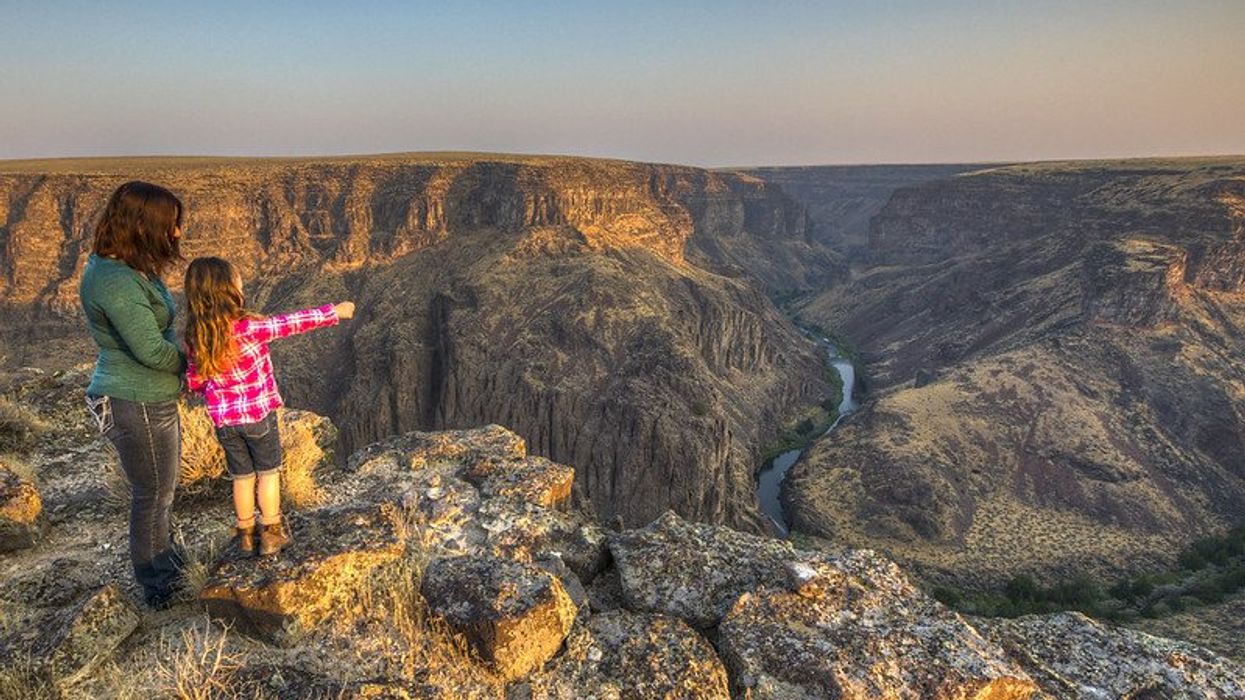
Local advocates are urging President Biden to create new national monuments in order to meet his administration's conservation goals, but the push has encountered resistance from some locals in the region.
Wyatt Myskow reports for Inside Climate News.
In short:
- The Owyhee Canyonlands are one of the last intact sagebrush habitats in the Western U.S., spanning around 7 million acres across three states.
- Threats to the region include invasive species, mining, and suburban development, leading advocates to push for national monument designation to protect the area.
- A coalition is working to urge President Biden to use the Antiquities Act to protect 1 million acres of the canyonlands, but legislation faces political hurdles.
Key quote:
“National monuments really are the most effective tool that we have as a country to protect biodiversity and ward off this extinction crisis.”
— Kate Groetzinger, communications manager for the Center for Western Priorities
Why this matters:
Conserving the Owyhee Canyonlands is crucial for maintaining biodiversity and protecting the region's fragile ecosystem, which is threatened by development and climate change. Read more: Giving Bears Ears and Grand Staircase-Escalante the protection they deserve.
8 May 2024.
Sport's hypocrisy in the climate crisis – 
Author Madeleine Orr highlights the irony of sports organizations supporting climate-damaging companies while athletes suffer the consequences of climate change.
Tanya Aldred reports for The Guardian.
In short:
- FIFA partnered with Aramco, a major fossil fuel emitter, despite environmental evidence linking the sports industry to the climate crisis.
- Orr’s book, Warming Up, illustrates how sports are impacted by climate change, from melting snow affecting winter sports to extreme heat threatening athletes’ health.
- Orr emphasizes practical steps to reduce climate impacts, like better heat protocols and moving away from fossil fuels in sports.
Why this matters:
As climate change accelerates, its effects on health and the sports industry are undeniable. Addressing these challenges is essential to safeguard not only the sports industry but also public health on a broader scale. Read more: How youth can battle extreme heat in their communities.
8 May 2024.
Sylvia Earle, a relentless ocean advocate, emphasizes urgency for ocean conservation – 
Sylvia Earle, the trailblazing oceanographer known as “Her Deepness,” shares her relentless passion for ocean protection despite mounting challenges.
Elizabeth Claire Alberts reports for Mongabay.
In short:
- Sylvia Earle has led more than 100 oceanic expeditions and continues to inspire global conservation efforts.
- Mission Blue, her NGO, has identified 162 critical “hope spots” in the ocean, needing immediate protection.
- Earle emphasizes the interconnectedness of marine life, urging collective action to prevent further environmental decline.
Key quote:
“What gives me hope is the kids coming along and the knowledge that’s changing the way people think. Maybe it’s not as fast as it should be, but it is accelerating.”
— Sylvia Earle, oceanographer and marine biologist
Why this matters:
Ocean health is crucial to human survival, yet it’s under threat from climate change, pollution, and overfishing. Sylvia Earle’s insights highlight the importance of protecting marine ecosystems for the well-being of our planet and future generations. Read more: The muddy waters of US ocean protection.
8 May 2024.
Mangroves are changing the landscape of the Texas coast – 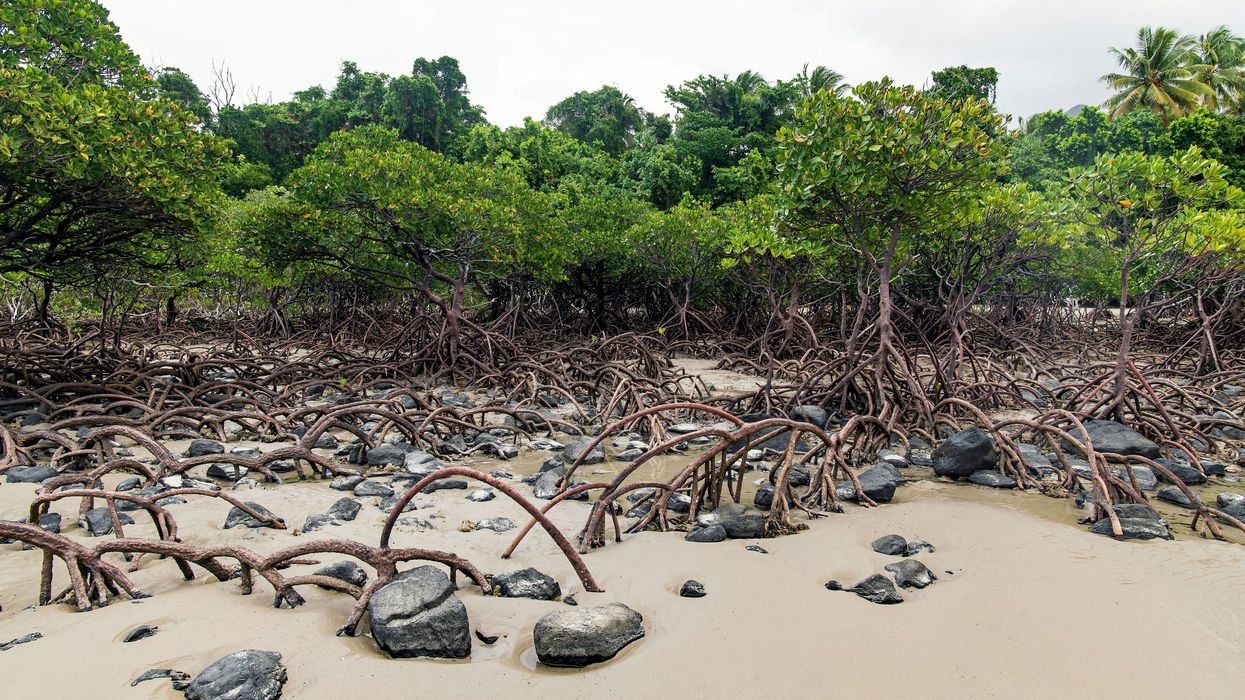
As temperatures rise due to climate change, mangroves are increasingly populating the Texas coast, leading scientists to explore their effects on the region's ecosystems.
Emily Foxhall reports for The Texas Tribune.
In short:
- Black mangroves are spreading northward in Texas, altering traditional coastal ecosystems and displacing some native species.
- Scientists are studying the dual impacts of mangroves, which can protect coastlines but also threaten the habitats of certain wildlife like whooping cranes.
- Periodic freezes have temporarily curbed their expansion, yet the general warming trend predicts a continued northward spread.
Key quote:
"The expansion and also the contraction [of mangroves] is a really striking and powerful example of the role of climate."
— Michael Osland, research ecologist, U.S. Geological Survey
Why this matters:
Mangroves are reshaping coastal landscapes and biodiversity. As they move into marshlands that have historically supported different ecosystems, there could be significant shifts in local biodiversity. Some species may thrive in their new mangrove neighbors' presence, while others could be edged out, potentially disrupting existing food webs.
For coastal communities, the expansion of mangroves might offer increased protection against storm surges and rising sea levels, but it also poses questions about water management and land use planning.
8 May 2024.
Contamination at Oklahoma farm highlights oil industry's neglect – 
Oklahoma farm suffers extensive environmental damage as local family battles oil companies over contaminated land and water sources.
Mark Olalde, reports for ProPublica, and Nick Bowlin for Capital & Main.
In short:
- Salt water leakage from an oil well on the Ledgerwood's farm killed vegetation and contaminated their drinking water.
- The family struggled to get accountability from oil companies, which often evade cleanup costs through bankruptcy.
- The estimated cleanup cost for Oklahoma's unplugged wells is about $7 billion, with insufficient funds set aside by the oil industry.
Key quote:
"We don’t get these years back. There’s no way to pay for that. We’ll never have back what we had."
— Stan Ledgerwood, Oklahoma farmer
Why this matters:
The contamination of land and water can lead to a cascade of adverse effects, not just on the immediate agricultural output but also on local wildlife and ecosystems. The potential seepage of pollutants into groundwater, for example, poses a significant risk to human health, affecting communities' access to clean drinking water.
Related: Dead livestock and poisoned water — Texas farmers sue over PFAS contamination
8 May 2024.
New climate-focused Build Green Act targets $500 billion in transportation reform – 
Sen. Elizabeth Warren proposes a $500 billion investment in green transportation to combat U.S. carbon emissions, aiming to modernize infrastructure and boost the economy.
Marianne Lavelle reports for Inside Climate News.
In short:
- The Build Green Act focuses on reducing carbon emissions by allocating significant funds to public transit and green infrastructure projects.
- Priority will be given to projects that support collective transportation and reduce air pollution, emphasizing environmental justice.
- The legislation also includes provisions for labor standards and equitable distribution of funds to rural and disadvantaged communities.
Key quote:
"The time to accelerate towards a clean energy future is now. Modernizing our transportation grid will pump billions into the economy, create green union jobs, and safeguard against the worst effects of climate change. That’s good news across the board."
— Sen. Elizabeth Warren, D-Mass.
Why this matters:
Green transportation encompasses a variety of technologies including electric vehicles (EVs), high-speed rail systems, and expanded public transit networks. These technologies not only promise to reduce the carbon footprint associated with traditional combustion engines but also aim to overhaul the commuting experience by offering faster, cleaner, and more efficient alternatives.
Related EHN coverage:
- The role of electric vehicles in the push for environmental justice
- LISTEN: Regan Patterson on transportation justice
- Black communities must lead the charge to repair harm from freeways
8 May 2024.
Climate change exacerbates spring planting anxieties for Midwest farmers – 
Amidst the increased rainfall due to climate change, farmers in the Midwest face heightened challenges during spring planting.
Joshua A. Bickel reports for The Associated Press.
In short:
- Farmers like Mark and Ross Woodruff experience delays and longer work hours as wet conditions prevent timely planting.
- Studies indicate a significant increase in spring rainfall across the Midwest, complicating traditional farming schedules.
- Advances in soil management and drainage systems are crucial as farmers adapt to more frequent and intense wet periods.
Key quote:
"This year, with the way the weather’s been, it’s slowed progress. I wouldn’t say we’re behind but a few more rains and we’re going to be."
— Ross Woodruff, farmer
Why this matters:
Historically, Midwest farmers could rely on predictable weather patterns to dictate when to till and sow their fields. However, recent years have introduced a less predictable scenario, marked by erratic weather events. Increased rainfall and flooding can delay planting, reducing the window for crops to mature. These disruptions threaten crop yields and increase financial and operational stress for farmers.
Related: Daniel Imhoff: Time for a climate resilient Farm Bill
8 May 2024.
Carbon markets in question as payment uncertainties loom – 
A surge in carbon removal technologies raises questions about sustainable funding sources.
Lydia DePillis reports for The New York Times.
In short:
- Innovation in carbon removal is escalating, yet funding mechanisms remain unclear, with companies traditionally buying offsets for environmental compensation.
- Recent skepticism has led to a decline in demand for voluntary carbon market credits, citing reliability issues and a lack of enforcement standards.
- Key industry figures express concerns over the sustainability of carbon markets, highlighting the need for established accounting standards and reliable enforcement.
Key quote:
"More than anything, it’s perpetuated a lack of trust in the voluntary carbon market, which has greatly affected demand."
— Arbor Day Foundation
Why this matters:
Trust and transparency are essential for the growth and effectiveness of carbon markets. Without these, the potential for these markets to facilitate significant environmental restoration and carbon mitigation is compromised, impacting future business models and environmental policies.
8 May 2024.
Developing nations urged to enhance transparency in climate finances – 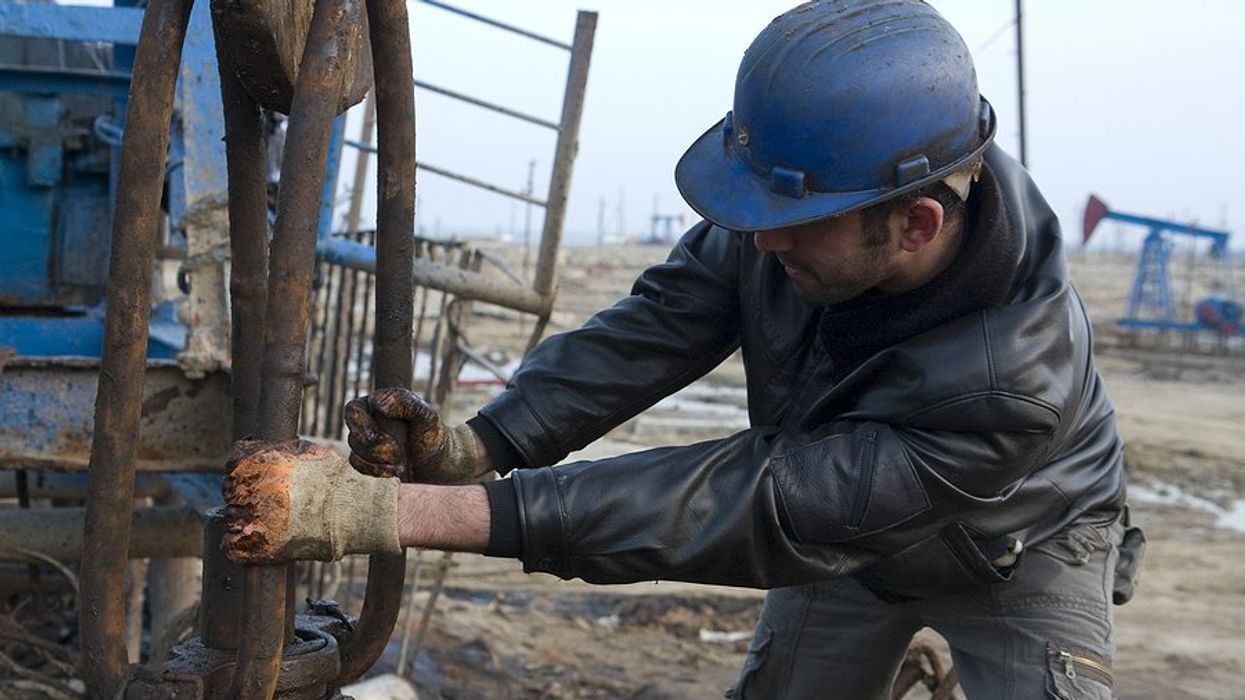
Mukhtar Babayev calls for improved financial accountability in climate actions as developing nations seek significant funding.
Fiona Harvey reports for The Guardian.
In short:
- At the upcoming COP29, a new global goal for climate finance will be established, with transparency as a key focus.
- Babayev emphasizes the creation of a "transparency mechanism" to foster trust and effective climate action among nations.
- Current challenges include the discrepancy in reported emissions and actual emissions, and the misuse of funds designated for climate initiatives.
Key quote:
“It’s very important to build this correct, good and honest trust between the parties.”
— Mukhtar Babayev, ecology minister of Azerbaijan
Why this matters:
At previous COP meetings, discussions around climate finance often centered on the commitments of developed nations to support developing countries in their climate mitigation and adaptation efforts. However, transparency has frequently been a stumbling block, with concerns about the adequacy and reliability of reported financial flows. The focus on transparency at COP29 aims to build trust among countries and ensure that funds are used effectively and reach their intended targets.
LISTEN: An audio diary from the COP28 climate conference
8 May 2024.
Energy storage surge reshapes US electricity landscape – 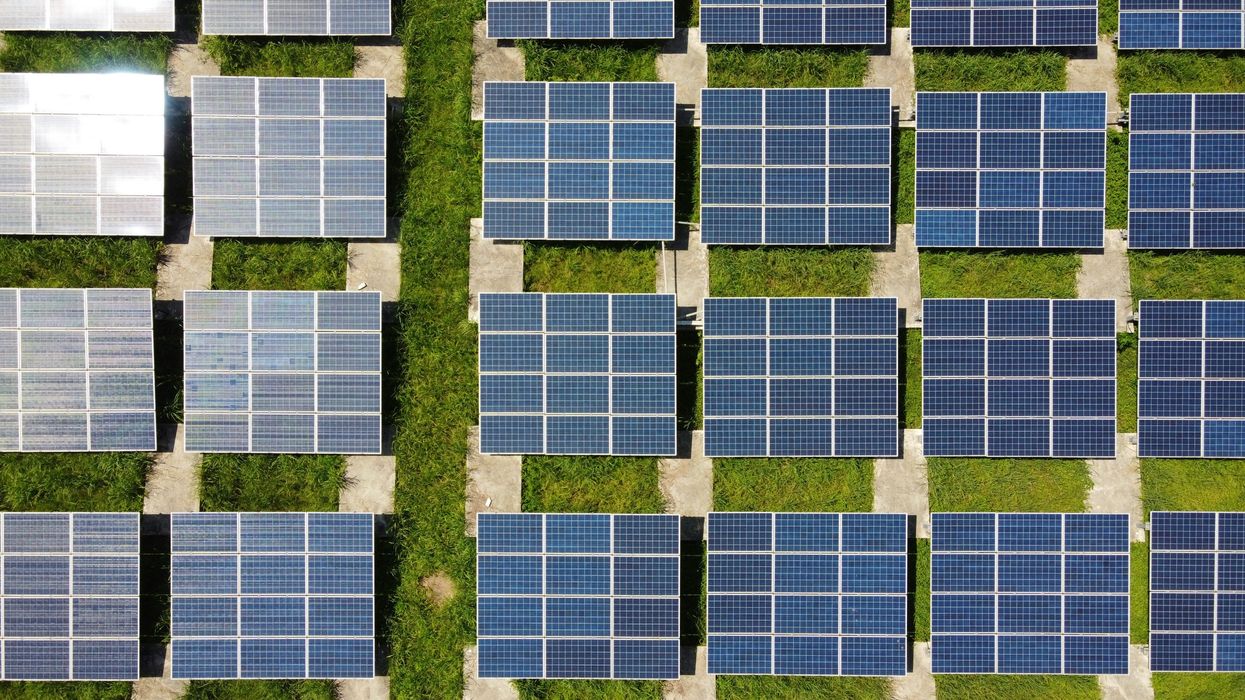
Giant batteries are increasingly used to deliver solar power into the evening and stabilize electricity grids across the U.S., showcasing significant technology growth.
Brad Plumer and Nadja Popovich report for The New York Times.
In short:
- California leads with the world's second-largest battery storage capacity, enhancing evening electricity supply without fossil fuels.
- Nationwide, battery storage capacity has expanded dramatically, supporting grid stability and reducing reliance on traditional energy sources.
- Advancements in battery technology and significant cost reductions have accelerated their adoption, influenced by both government policy and market dynamics.
Key quote:
"What's happening in California is a glimpse of what could happen to other grids in the future."
— Helen Kou, head of U.S. power analysis at BloombergNEF
Why this matters:
Large-scale battery systems are pivotal in addressing one of the longstanding challenges of renewable energy: variability. Solar panels, for instance, produce power only when the sun is shining. But as we push toward a more sustainable grid, balancing supply with demand becomes crucial. Here, giant batteries play a critical role. They not only store excess energy generated during peak sunlight but also help stabilize electricity grids, smoothing out the fluctuations caused by the intermittent nature of solar and wind energy.
Some more good news: Solar power on the rise at US schools.
8 May 2024.
Electric vehicle purchases show a political divide in the US – 
A study reveals a stark divide in electric vehicle (EV) ownership in the U.S., with Democrats far more likely to purchase EVs than Republicans, reflecting broader political and cultural tensions.
Shannon Osaka reports for The Washington Post.
In short:
- Democratic counties significantly outpace Republican ones in EV adoption, despite similar economic conditions.
- Political leaders and cultural attitudes have polarized perceptions of electric vehicles, with significant opposition from Republican figures.
- Researchers suggest that visibility and familiarity with EVs could encourage broader acceptance across political divides.
Key quote:
"There's an incredible correlation with political ideology."
— Lucas Davis, professor of business and technology, University of California, Berkeley
Why this matters:
The political polarization of electric vehicle adoption could hinder the U.S.'s ability to meet its climate goals. Bridging this divide may require shifting perceptions of EVs beyond the political and cultural conflicts that currently frame them.
Peter Dykstra: Headwinds remain for clean energy.
8 May 2024.
Nisga'a Nation spearheads a major LNG project in British Columbia – 
The Ksi Lisims LNG project, led by the Nisg̱a’a Nation in British Columbia, faces intense scrutiny over its environmental impact and implications for Indigenous rights as it nears a production level comparable to the province's largest LNG operation.
Shannon Waters reports for The Narwhal.
In short:
- The Ksi Lisims LNG project, located in the Nass estuary near the Alaska border, aims to produce up to 12 million tonnes of LNG annually, rivaling the output of the larger LNG Canada.
- The project, led by the Nisg̱a’a Nation, has sparked concerns among other First Nations and environmentalists regarding its potential ecological impacts and implications for Indigenous rights.
- While proponents argue the project could help reduce global reliance on coal by providing cleaner fuel options, significant environmental and social challenges remain.
Key quote:
“I know the environmental assessment office takes that challenge very, very seriously and it is a difficult challenge. Like anything in society, not everybody agrees.”
— B.C. Environment Minister George Heyman
Why this matters:
Nestled in an area known for its rich biodiversity, the Nass estuary is home to numerous species of fish, birds, and other wildlife, making it a critical habitat that environmentalists argue must be preserved. The production of LNG, while cleaner than other fossil fuels like coal and oil, still involves processes that can lead to the emission of greenhouse gases and other pollutants. This is particularly concerning in a time when there is global pressure to reduce emissions and transition toward renewable energy sources.
Related EHN coverage:
- LNG production comes with a price, Gulf Coast communities warn
- Derrick Z. Jackson: Natural gas vs. renewable energy — beware the latest gas industry talking points
7 May 2024.
Plastic pollution treaty talks yield mixed results for Arctic Indigenous communities – 
Despite global talks aiming to tackle plastic pollution, Arctic Indigenous communities return home to worsening plastic impacts without commitments to reduce plastic production.
Sonam Lama Hyolmo reports for Mongabay.
In short:
- The recent global treaty talks in Ottawa lacked firm commitments to curb plastic production, leaving Arctic Indigenous communities disheartened.
- Plastics and petrochemicals collect in the Arctic, causing health and environmental damage while climate change exacerbates these issues.
- Oil industries and some nations emphasize recycling over production cuts, which experts argue won't fully address the problem.
Key quote:
“The Biden administration is moving forward with a massive oil and gas project that is a climate disaster waiting to happen while refusing to listen to the voices of my constituents and community.”
— Rosemary Ahtuangaruak, Iñupiaq scholar and leader from the Native village of Nuiqsut.
Why this matters:
The Arctic, melting faster than other regions, is a "sink" for plastic pollution from around the globe, drastically affecting the health and culture of Indigenous people. Read more: Ending toxic threats to Alaska from plastics and petrochemicals.
7 May 2024.
Illinois faces challenges in addressing coal ash contamination – 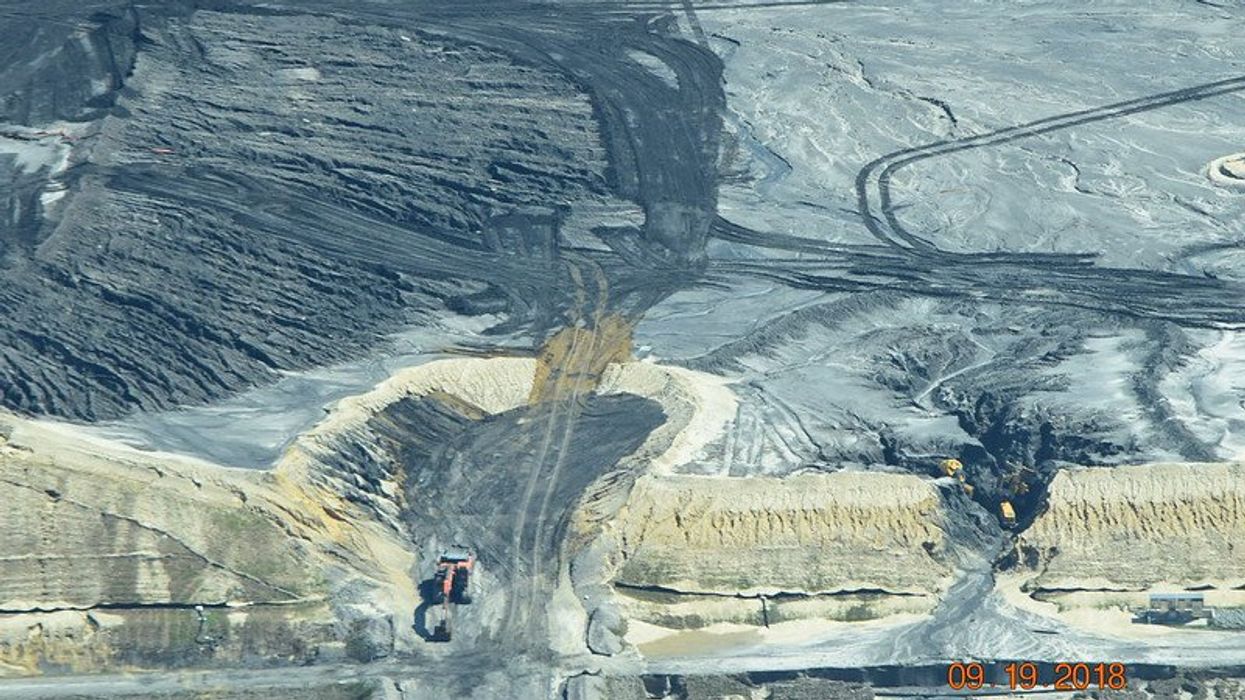
Despite Illinois passing a law five years ago to manage coal ash contamination, progress has stalled, leaving environmental advocates concerned.
Juanpablo Ramirez-Franco reports for Grist.
In short:
- In 2019, Illinois passed a law to regulate coal ash and required plant operators to submit plans to clean up or shut down.
- Despite finalized rules, permits for the coal ash pits in Waukegan have yet to be approved, delaying remediation.
- Federal rules have intensified scrutiny of coal ash, aiming to reduce its environmental impact and safeguard communities.
Key quote:
“When it comes to the implementation of these rules, it’s 2024 and we don’t have permits yet. And I don’t think anyone was expecting that.”
— Celeste Flores, co-chair of Clean Power Lake County
Why this matters:
Coal ash contains hazardous substances that can leach into groundwater, posing serious health risks. The prolonged delay in issuing permits for cleanup leaves communities exposed to potential pollution, heightening the urgency for regulatory action. Read more: Former coal plant near Pittsburgh is poisoning groundwater.
7 May 2024.
New pipelines spotlight flawed safety oversight – 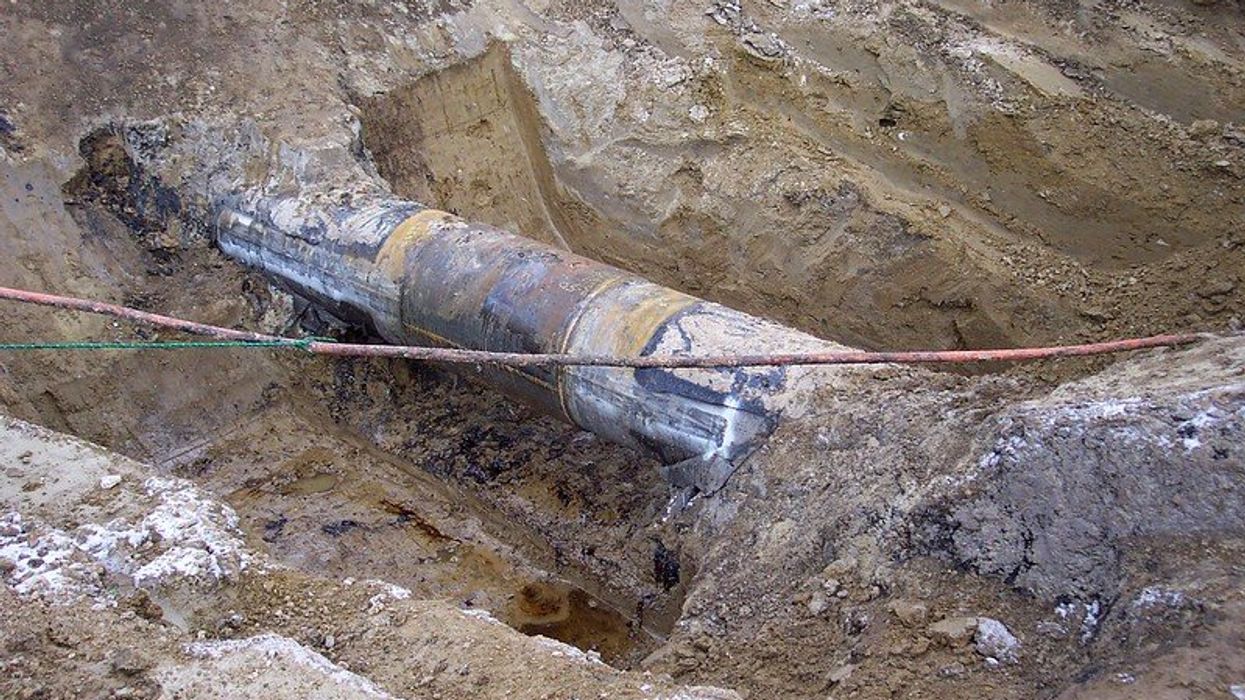
A growing network of pipelines faces scrutiny as inadequate regulatory oversight leaves safety in the hands of companies, risking both public and environmental safety.
Mike Soraghan reports for Politico.
In short:
- Despite inspectors flagging unstable construction conditions, the Revolution ethane pipeline continued until a landslide caused an explosion in Pennsylvania in 2018.
- Federal oversight agencies rely heavily on company-funded private inspectors, whose warnings are often disregarded or downplayed.
- Expansion in oil, gas, and carbon dioxide pipelines continues with insufficient regulatory resources to ensure proper safety standards.
Key quote:
"No industry is going to police itself very well. We need an independent regulator to be the one that does that."
— Bill Caram, executive director of the Pipeline Safety Trust
Why this matters:
The pipeline industry's self-regulation risks health and environmental safety, as insufficient oversight can lead to explosions, leaks, and toxic emissions. Read more: How Native tribes, hell-raisers and lawyers have combined to battle pipeline projects.
7 May 2024.
Production cap is crucial to global treaty on plastic pollution, study suggests – 
Future models on plastic pollution suggest limiting the world's annual plastic production is necessary to mitigate its environmental impact.
Costas Velis writes for The Conversation.
In short:
- An upcoming international treaty aims to curb plastic pollution, with Rwanda and Peru proposing a 40% global production cut target by 2040.
- Plastic production needs to drop by 47% compared to 2016 levels to mitigate its harmful environmental effects, but even this ambitious target leaves significant pollution.
- Effective solutions require drastic lifestyle changes, shifting consumption habits and better waste management, particularly in underdeveloped regions.
Why this matters:
Tackling plastic pollution demands global cooperation and significant lifestyle changes. To achieve health and environmental goals, it's crucial to prioritize waste prevention and sustainable consumption. Read more: “Plastic will overwhelm us:” Scientists say health should be the core of global plastic treaty.
7 May 2024.
The Biden administration's mixed record on environmental justice – 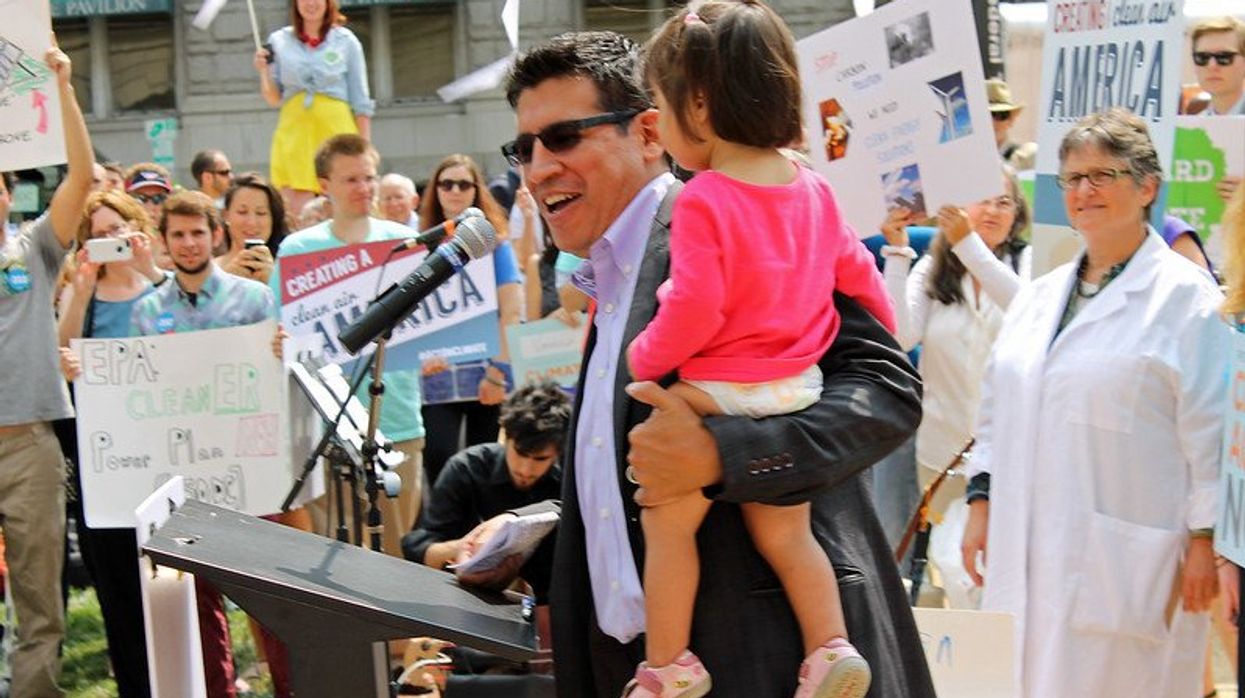
In an interview with High Country News, Mark Magaña discusses the strides made by the America the Beautiful for All coalition in advancing environmental justice and conservation efforts, while emphasizing the need for continued progress.
Erin X. Wong reports for High Country News.
- Biden's 2021 Executive Order pushed for environmental justice through the 30×30 plan and Justice40 Initiative.
- The America the Beautiful for All coalition, representing over 250 organizations, recently shared their policy agenda assessing progress on these initiatives.
- Mark Magaña, a founding member, believes funding distribution could still improve, and oil and gas infrastructure decisions hinder environmental justice goals.
Key quote:
"I would grade them high on their work being able to push through with funding. I would grade them low when it comes to their policy decisions to support oil and gas infrastructure at the existential moment that we’re in."
— Mark Magaña, CEO of GreenLatinos
Why this matters:
The coalition's efforts and Magaña's insights reflect the importance of strong environmental policies in tackling climate change and ensuring marginalized communities directly benefit from federal initiatives. Read more: A Rhode Island city gets serious about climate justice.
7 May 2024.
Natural gas study draws criticism over industry influence – 
A recent report led by former U.S. Energy Secretary Ernest Moniz and funded by the natural gas industry, has faced backlash for downplaying the climate impact of natural gas.
Phil McKenna reports for Inside Climate News.
In short:
- The report was funded by the natural gas industry and is said to favor LNG despite climate concerns.
- A congressional investigation revealed that oil and gas companies have been downplaying the climate impact of natural gas.
- Some scientists argue the climate impact of natural gas is as bad as or worse than coal.
Key quote:
"The facts presented then and subsequent research from RMI and peers have confirmed that leaks of methane, the main ingredient in natural gas, even at small amounts, make it as bad as or worse than coal for the climate and not necessarily the cleaner alternative it was once thought to be."
— Amory Lovins, cofounder and former chief scientist for the Rocky Mountain Institute
Why this matters:
Understanding the industry's influence on reports like this one is crucial to ensure policies are based on objective science. Read more: EPA’s “scientific integrity” program lacks teeth, group alleges.
7 May 2024.
Regenerative agriculture shows potential for British Columbia drought resilience – 
A Swiss-born farmer in British Columbia demonstrates how regenerative agricultural practices can boost resilience to extreme drought conditions that increasingly threaten regional food security.
Matt Simmons reports for The Narwhal.
In short:
- Farmers in Western Canada are turning to regenerative agriculture to combat severe drought conditions, utilizing techniques that enhance soil health and water retention.
- These sustainable practices, such as minimal tillage and no chemical fertilizers, have proven essential in maintaining productivity during extreme weather.
- Efforts are supported by provincial initiatives, including funding for water storage systems, to aid farmers in adapting to changing climate conditions.
Key quote:
"If I treat the land right, it will feed me better. Healthy soil, healthy plants, healthy animals, healthy people. Simple."
— Eugen Wittwer, farmer
Why this matters:
As climate change accelerates, sustainable agricultural practices that preserve soil moisture and biodiversity are crucial for securing the future of food production. Addressing drought through regenerative farming not only secures food production but also builds resilience against climate change impacts. Read more: The global food system is failing small-scale farmers — here’s how to fix it.
7 May 2024.
Flooding in Brazil kills dozens and displaces thousands – 
Torrential rainstorms have struck Brazil’s Rio Grande do Sul, leading to catastrophic flooding, dozens of deaths, and massive displacement.
Lauren Herdman reports for The Guardian.
In short:
- Rio Grande do Sul experienced its worst flooding in 80 years, with rainfalls between 20-40 inches.
- The storms caused a small hydroelectric dam to partially collapse, sending a large wave through the surrounding areas.
- Climate experts link the devastation to global heating and the El Niño weather pattern.
Why this matters:
Extreme weather events like these highlight the devastating impacts of climate change and El Niño, leaving communities vulnerable and underscoring the urgency for global action on climate resilience and disaster management. Read more: Nowhere to go in New Bern: Climate catastrophe spurs migrants in US South.
7 May 2024.
A new climate fund aims to aid developing countries – 
The new UN Loss and Damage Fund aims to be a game-changer in climate finance by providing quick and direct relief to regions affected by climate disasters like floods, droughts, and heatwaves.
Bob Berwyn reports for Inside Climate News.
In short:
- The new climate fund board will include 14 members from developing countries and 12 from developed nations, with the World Bank acting as its temporary host.
- Concerns persist regarding the World Bank's history and potential influence, though progress has been made toward meeting UNFCCC conditions.
- With no clear funding goal set, the fund is expected to raise substantial amounts and has received pledges totaling $661 million so far.
Key quote:
“If you don’t have a vision of a trillion dollar fund, if you create a fund which is just channeling a couple of millions, sorry, it’s a disrespectful waste of time.”
— Harjeet Singh, Fossil Fuel Non-Proliferation Treaty Initiative
Why this matters:
The fund represents a pivotal shift toward addressing climate damage in developing nations, which have contributed the least to climate change but face disproportionate consequences. Read more: Mourning family and climate change in the age of loss and damage.
7 May 2024.
Tesla scales back on building electric vehicle charging stations – 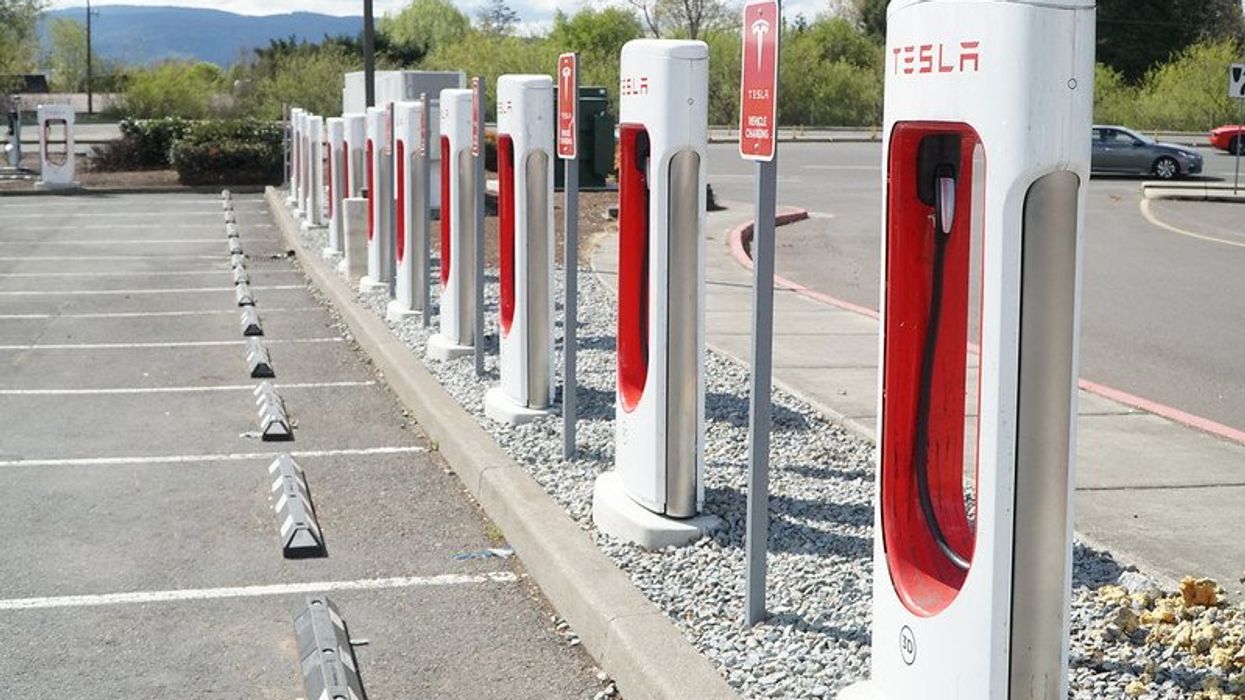
Tesla, led by Elon Musk, has decided to reduce its focus on expanding the electric vehicle charging network in the United States, leaving other companies to step up and meet the growing demand for public chargers.
Jack Ewing and Ivan Penn report for The New York Times.
In short:
- Tesla laid off 500 employees responsible for installing charging stations and scaled back on new station investments, creating uncertainty about future charging infrastructure.
- This shift places the burden on other companies, sparking doubts about their ability to keep up with the rising demand for electric vehicle chargers.
- Despite the setbacks, government subsidies and private investments are fueling an increase in the number of fast chargers nationwide.
Key quote:
“If Tesla is no longer bidding on these things, the agencies handing them out will go to other operators. There are a lot of different participants.”
— Badar Khan, the chief executive of EVgo
Why this matters:
Reliable charging infrastructure is key to the widespread adoption of electric vehicles, directly impacting the transition to cleaner transportation and achieving emission reduction targets. Read more: The role of electric vehicles in the push for environmental justice.
7 May 2024.
How the world wastes an astonishing amount of food, in three charts – 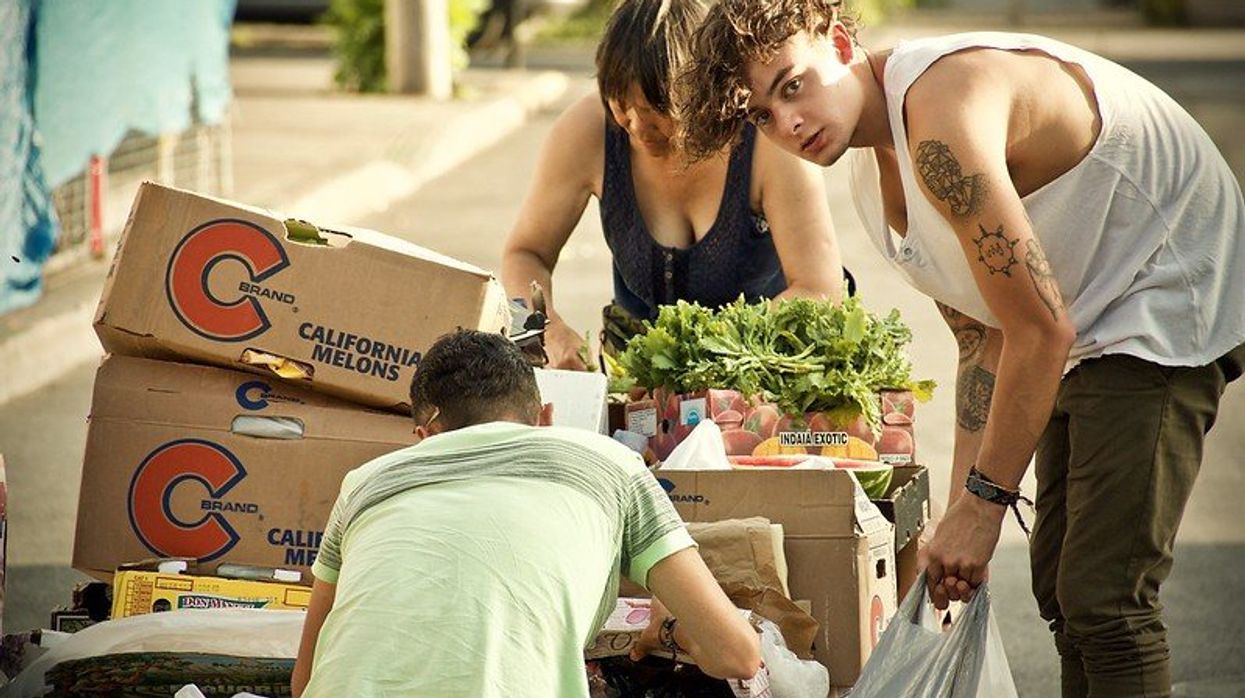
A recent UN report highlights how over a trillion dollars' worth of food is wasted annually, exacerbating climate change and food insecurity globally.
In short:
- The UN's 2024 Food Waste Index found that more than 780 million people were hungry in 2022, despite vast amounts of food being wasted.
- Food waste contributes up to 10% of global greenhouse gas emissions, worsening climate change.
- Solutions to food waste require coordinated efforts from governments, businesses, and individuals alike.
Key quote:
Food waste reduction is "an opportunity to reduce costs and to tackle some of the biggest environmental and social issues of our time: fighting climate change and addressing food insecurity."
— Report authors
Why this matters:
Food waste not only worsens global hunger but also significantly impacts the environment, making it crucial to address this issue to reduce greenhouse gas emissions and ensure equitable food distribution. Read more: It is time to respect the planet’s boundaries—and overhaul how we eat and waste food—if we want to feed our rising population.
7 May 2024.
Climate activists convicted in court despite urgency of climate change – 
Two environmental activists were convicted in a Nanaimo court for civil disobedience, with the judge ruling that the climate crisis does not justify breaking the law.
Peter Fairley reports for The Tyee.
In short:
- The activists presented a necessity defense, arguing that climate change justifies their actions, but the judge disagreed.
- The judge acknowledged climate change as an existential threat but said it didn't meet the standard of imminent danger required to excuse illegal acts.
- Despite the conviction, activists see progress, as the trial marked the first time climate activists presented expert testimony for a necessity defense.
Key quote:
“I’ve no doubt on the evidence that climate change constitutes an existential threat to life in Canada and everywhere else in the world.”
— Judge Ronald Lamperson, Provincial Court Judge
Why this matters:
The case highlights the ongoing debate over the appropriate response to climate change with this court ruling that the peril of climate change was not sufficiently imminent and unavoidable to justify the activism. Read more: Youth v. Montana — Young adults speak up.
6 May 2024.
US oil and gas sector pours big money into GOP politics – 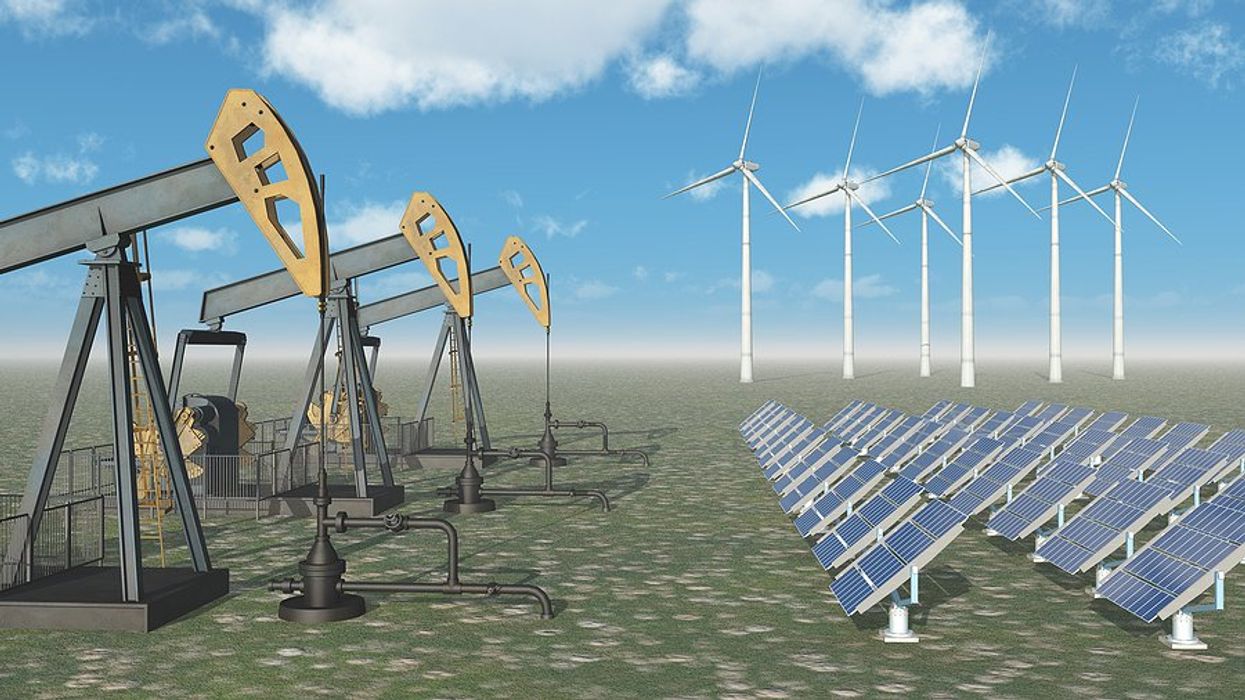
The oil and gas industry is significantly increasing its campaign contributions to Republicans like August Pfluger, a Texas Congressman, despite booming under President Biden.
Marcus Baram reports for Capital & Main.
In short:
- August Pfluger, a relatively unknown Republican, is the largest recipient of oil and gas campaign donations in the 2024 election cycle, receiving over $573,000.
- The fossil fuel industry, favoring GOP candidates who support their interests, has contributed over seven times more to Republicans than to Democrats in this cycle.
- While oil production is reaching new heights, the industry continues to criticize Biden’s environmental policies, claiming they're a threat to fossil fuel profitability.
Key quote:
“Despite the fact that oil is doing incredibly well under President Biden, the industry and its allies have continued to press the misleading talking point that Biden is engaged in war on oil and gas."
— Alan Zibel, Public Citizen analyst
Why this matters:
The oil and gas industry's significant financial backing of the GOP highlights the sector's influence on U.S. energy policies, which could affect climate change mitigation and the transition to cleaner energy sources. Read more: Brace yourself for more attention — and attacks — on climate change and the environment.
6 May 2024.
Oil companies pursue offshore drilling, touting lower emissions – 
Offshore drilling companies like Shell are increasing deepwater oil and gas extraction in the Gulf of Mexico, claiming it is a cleaner alternative than onshore operations due to reduced greenhouse gas emissions.
Ivan Penn reports for The New York Times.
In short:
- Oil companies argue that deepwater drilling is crucial for global energy needs and has a lower carbon footprint than onshore drilling.
- The Gulf of Mexico has experienced rising oil production, reversing the decline after the 2010 Deepwater Horizon spill.
- Environmentalists are concerned about the industry's pivot back to fossil fuels, urging a faster shift to renewable energy.
Key quote:
“We’re not talking about stopping oil production today. But no matter how you look at it, there’s a really dire need to accelerate this shift to clean energy.”
— Brettny Hardy, a senior lawyer in the Oceans Program at Earthjustice
Why this matters:
As critical planetary tipping points loom large, a continued focus on fossil fuel extraction threatens progress toward climate goals. Read more: We don’t have time for another fossil fuel bridge.
24 January 2024.
Amid LNG’s Gulf Coast expansion, community hopes to stand in its way – 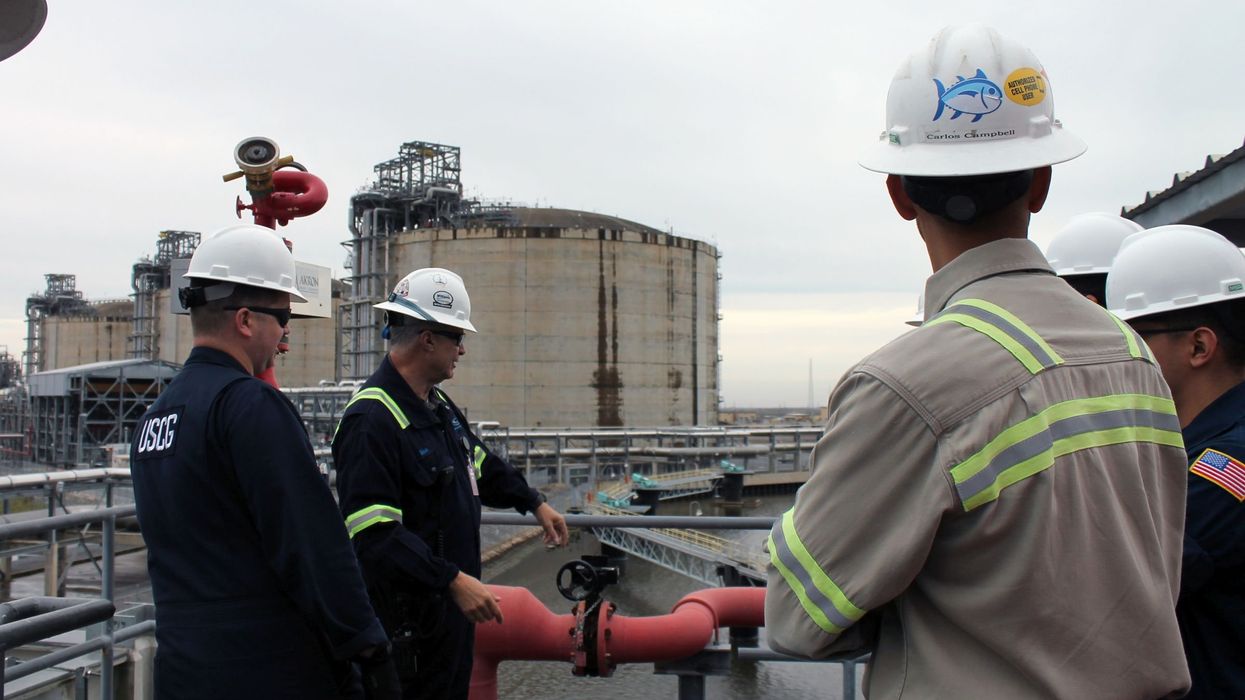
This 2-part series was co-produced by Environmental Health News and the journalism non-profit Economic Hardship Reporting Project. See part 1 here. Este ensayo también está disponible en español
CAMERON PARISH, La. — Late into the night, John Allaire watches the facility next to his home shoot 300-foot flares from stacks.
He lives within eyesight of southwest Louisiana’s salty shores, where, for decades, he’s witnessed nearly 200 feet of land between it and his property line disappear into the sea. Two-thirds of the land was rebuilt to aid the oil and gas industry’s LNG expansion. LNG — shorthand for liquified natural gas – is natural gas that's cooled to liquid form for easier storage or transport; it equates to 1/600th the volume of natural gas in a gaseous state. It’s used to generate electricity, or fuel stove tops and home heaters, and in industrial processes like manufacturing fertilizer.
In the U.S., at least 30 new LNG terminal facilities have been constructed or proposed since 2016, according to the Oil and Gas Watch project. Louisiana and Texas’ Gulf Coast, where five facilities are already operating, will host roughly two-thirds of the new LNG terminals – meaning at least 22 Gulf Coast LNG facilities are currently under construction, were recently approved to break ground or are under further regulatory review.
Although the U.S. didn’t ship LNG until 2016, when a freight tanker left, a few miles from where Cameron Parish’s LNG plants are today, last year the country became the global leader in LNG production and export volume, leapfrogging exporters like Qatar and Australia. The EIA’s most recent annual outlook estimated that between the current year and 2050, U.S. LNG exports will increase by 152%.
And it’s changed local economic estimates: last year, retired Louisiana State University professor Loren Scott’s economic forecast last year predicted an additional $36 billion in oil and gas industry spending will boost local employment by 7% over just two years.
Allaire, 68, watches how saltwater collects where rainwater once fed the area’s diminishing coastal wetlands. “We still come down here with the kids and set out the fishing rods. It's not as nice as it used to be,” he told Environmental Health News (EHN).
That intimacy with nature drew Allaire to the area when he purchased 311 acres in 1998. An environmental engineer and 30-year oil and gas industry veteran, he helped lead environmental assessments and manage clean-ups, and although retired, he still works part-time as an environmental consultant with major petroleum companies. With a lifetime of oil and gas industry expertise, he’s watched the industry's footprint spread across Louisiana and the Gulf of Mexico’s fragile shores and beyond. Now that the footprints are at the edge of his backyard, Allaire is among a cohort of organizers, residents and fisher-folk in the region mobilizing to stop LNG facility construction. For him, the industry’s expansion usurps the right-or-wrong ethics he carried across his consulting career. For anglers, oil and gas infrastructure has destroyed fishing grounds and prevented smaller vessels from accessing the seafood-rich waters of the Calcasieu River.
From the view of Allaire’s white pickup truck as he drives across his property to the ocean’s shore, he points to where a new LNG facility will replace marshlands. Commonwealth LNG intends to clear the land of trees and then backfill the remaining low-lying field.
“You see what’s happening with the environment,” Allaire said. “When the facts change, I got to change my mind about what we’re doing.”
Community bands together

During an Earth Day rally in April, community members gathered in the urban center of Lake Charles to demand local oil and gas industries help deliver a safer, healthier future for all. In between live acts by artists performing south Louisiana’s quintessential zydeco musical style, speakers like James Hiatt, a Calcasieu Parish native with ties to Cameron Parish and a Healthy Gulf organizer, and RISE St. James organizer Sharon Lavigne, who’s fighting against LNG development in rural Plaquemines Parish near the city of New Orleans, asked the nearly 100 in attendance to imagine a day in which the skyline isn’t dotted by oil and gas infrastructure.
Not long ago, it was hard to imagine an Earth Day rally in southwest Louisiana at all. For decades, the area has been decorated with fossil fuel infrastructure. Sunsets on some days are highlighted by the chemicals in the air; at night, thousands of facilities’ lights dot the dark sky.
“It takes a lot of balls for people to start speaking up,” Shreyas Vasudevan, a campaign researcher with the Louisiana Bucket Brigade, told EHN in the days after the rally. In a region with its history and economy intertwined with oil and gas production, “you can get a lot of social criticism – or ostracization, as well – even threats to your life.”
Many are involved in local, regional and national advocacy groups, including the Louisiana Bucket Brigade, Healthy Gulf, the Sierra Club, the Natural Resources Defense Council, the Turtle Island Restoration Network, the Center for Biological Diversity and the National Audubon Society.
“You see what’s happening with the environment,” Allaire said. “When the facts change, I got to change my mind about what we’re doing.” - John Allaire, environmental engineer and 30-year oil and gas industry veteran
But environmental organizers are fighting a multi-billion-dollar industry with federal and state winds at its back. And LNG’s federal support is coupled with existing state initiatives.
Under outgoing Louisiana Gov. John Bel Edwards — a term-limited Democrat — the state pledged a goal of reaching net-zero greenhouse emissions by 2050. Natural gas, which the LNG industry markets as a cleaner-burning alternative, is cited as one of the state’s solutions. Louisiana is the only state that produces a majority of its carbon emissions through fossil fuels refining industries, like LNG, rather than energy production or transportation. Governor Edwards’ office did not return EHN’s request for comment.
This accommodating attitude towards oil and gas industries has resulted in a workforce that’s trained to work in LNG refining facilities across much of the rural Gulf region, said Steven Miles, a lawyer at Baker Botts LLP and a fellow at the Baker Institute’s Center on Energy Studies. Simultaneously, anti-industrialization pushback is lacking. It’s good news for industries like LNG.
“The bad news,” Miles added. “[LNG facilities] are all being jammed in the same areas.”
One rallying cry for opponents is local health. The Environmental Integrity Project found that LNG export terminals emit chemicals like carbon monoxide –potentially deadly– and sulfur dioxide, of which the American Lung Association says long-term exposure can lead to heart disease, cancer, and damage to internal or female reproductive organs.
An analysis of emissions monitoring reports by the advocacy group the Louisiana Bucket Brigade found that Venture Global’s existing Calcasieu Pass facility had more than 2,000 permit violations.That includes exceeding the permit’s authorized air emissions limit to release nitrogen oxides, carbon monoxide, particulate matter and volatile organic compounds 286 out of its first 343 days of operation.

Rather than amend its infrastructure to meet regulatory standards, Venture Global is asking the state to raise its facility’s air emissions permit limits to release an additional 833% of greenhouses gasses each year, according to the Louisiana Bucket Brigade’s January report. If approved, permitted emissions would rise to roughly 4.65 million tons, making the facility the state’s fifth-largest emitter), according to a 2021 statewide greenhouse data inventory compiled by Louisiana State University’s Center for Energy Studies.
“This is just one facility,” at a time when three more facilities have been proposed in the region and state, Vasudevan said. Venture Global’s operational LNG facility — also known as Calcasieu Pass — “is much smaller than the other facility they’ve proposed.”
In an area that experienced 18 feet of storm surge during Hurricane Laura in 2020 — and just weeks later, struck by Hurricane Delta — Venture Global is planning to build a second export terminal Known as “CP2,” it’s the largest of the roughly two dozen proposed Gulf LNG export terminals, and a key focal point for the region’s local organizing effort.
Residents “don’t really want LNG as much as they want Cameron [Parish] from 1990 back,” Hiatt told EHN of locals’ nostalgia for a community before storms like Rita in 2005 brought up to 15 feet of storm surge, only for Laura to repeat the damage in 2020. Throughout that time, the parish’s population dipped from roughly 10,000 to 5,000. “But the wolf knocking at the door is LNG. Folks in Cameron think that's going to bring back community, bring back the schools, bring back this time before we had all these storms — when Cameron was pretty prosperous.”
“Clearly,” for the oil and gas industry, “the idea is to transform what was once the center of commercial fishing in Louisiana to gas exports,” Cindy Robertson, an environmental activist in southwest Louisiana, told EHN.
Helping fishers’ impacted by LNG is about “actual survival of this unique culture,” Cooke said.
In a measure of organizers’ success, she pointed to a recent permit hearing for Venture Global’s CP2 proposal. Regionally, it’s the only project that’s received an environmental permit, but not its export permit, which remains under federal review. At the meeting, some spoke on the company’s behalf. As an organizer, it was a moment of clarity, Cooke explained. Venture Global officials “had obviously done a lot of coaching and organizing and getting people together in Cameron to speak out on their behalf,” Cooke said. “So, in a way, that was bad. But in another way, it shows that we really had an impact.”
“It also shows that we have a lot to do,” Cooke added.
Environmental organizers like Alyssa Portaro describe a sense of fortitude among activists — she and her husband to the region’s nearby town of Vinton near the Texas-Louisiana border. Since the families’ relocation to their farm, Portaro has worked with Cameron Parish fisher-folk.
“I’ve not witnessed ‘community’ anywhere like there is in Louisiana,” Portaro told EHN. But a New Jersey native, she understands the toll environmental pollution has on low-income communities. “This environment, it’s so at risk — and it’s currently getting sacrificed to big industries.”
“People don’t know what we’d do without oil and gas. It comes at a big price,” she added.
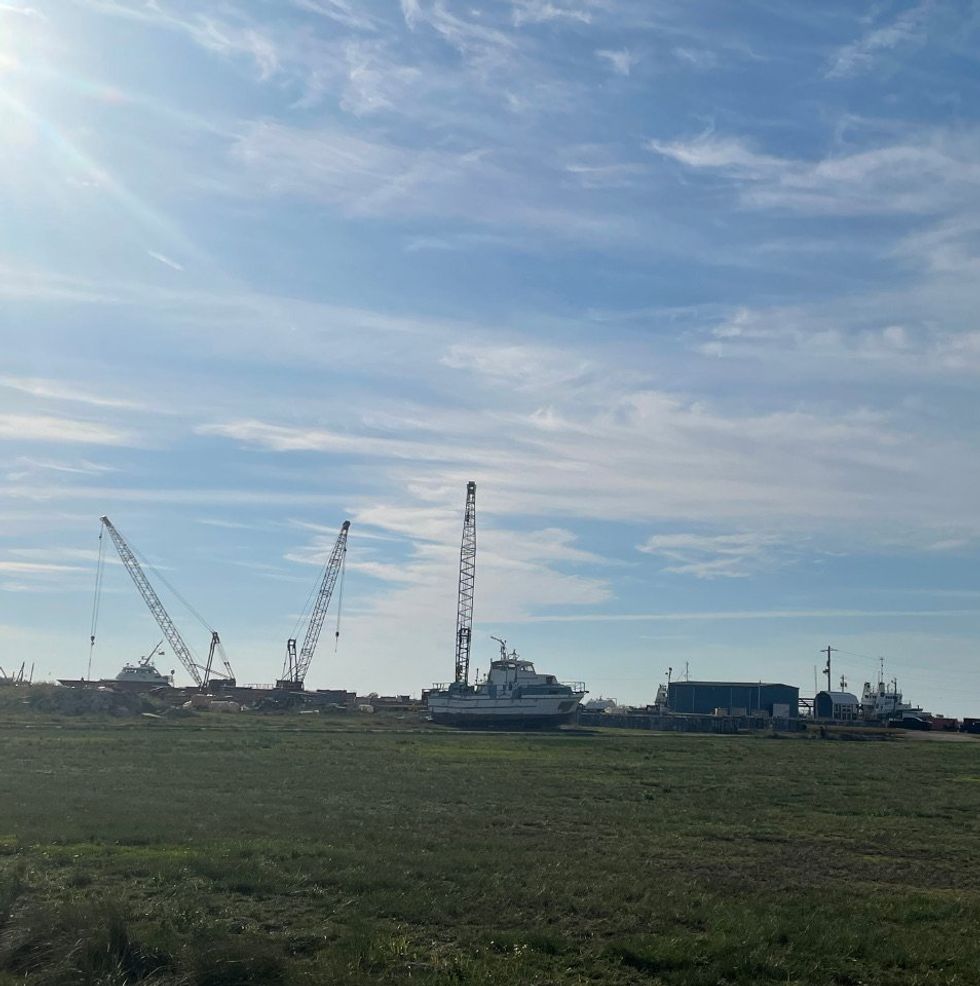

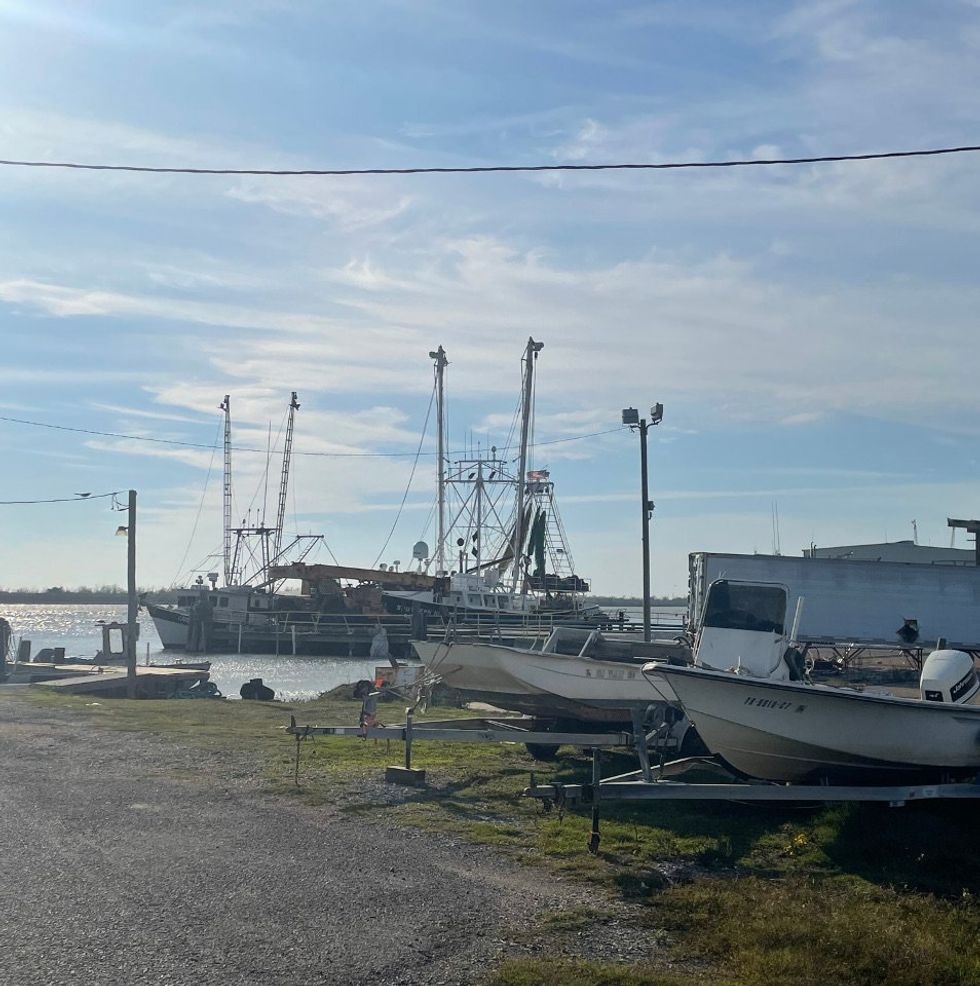
A disappearing parish
The stakes are seemingly higher for a region like southwest Louisiana, which is the epicenter of climate change impacts.
In nearly a century, the state has lost roughly 2,000 square miles of land to coastal erosion. In part driving the state’s erosion crisis is the compounding impacts of Mississippi River infrastructure and oil and gas industry activity, such as dredging canals for shipping purposes, according to a March study published in the journal Nature Sustainability. Louisiana’s Coastal Protection and Restoration Authority said Cameron Parish could lose more land than other coastal parishes over the next 50 years. A recent Climate Central report says the parish will be underwater within that time frame.
On top of erosion and sea level rise impacts, in August, 2023, marshland across southwest Louisiana’s Cameron Parish burned. The fires were among at least 600 across the Bayou State this year. Statewide, roughly 60,000 acres burned — a more than six-fold increase of the state’s average acres burned per year in the past decade alone.
But while the blaze avoided coastal Louisiana communities like Cameron Parish, the fires represented a warning coming from a growing chorus of locals across the region — one that’s echoes by the local commercial fishing population, who claimed to have experienced unusually low yields during the same time, according to a statement from a local environmental group. At the site of the Cameron Parish fires are locations for two proposed LNG expansion projects.
"The idea is to transform what was once the center of commercial fishing in Louisiana to gas exports.” - Cindy Robertson, an environmental activist in southwest Louisiana
It was an unusual occurrence for an area that’s more often itself underwater this time of year due to a storm surge from powerful storms. For LNG expansion’s local opposition, it was a red flag.
As the Louisiana Bucket Brigade has noted prior, the confluence of climate change’s raising of sea levels and the construction of LNG export terminals — some are proposed at the size of nearly 700 football fields — are wiping away the marshland folks like Allaire watched wither. Among their fears is that the future facilities won’t be able to withstand the power of another storm like Laura and its storm surge, which wiped away entire communities in 2020.
Amidst these regional climate impacts, LNG infrastructure has shown potential to exacerbate the accumulation of greenhouse gasses that cause global warming. For the most part, LNG is made up of methane — a greenhouse gas that’s more than 80 times more potent than carbon dioxide in the atmosphere. Among the 22 current LNG facility proposals, the advocacy group Sierra Club described a combined climate pollution output that would roughly equal to that of about 440 coal plants.
The climate impacts prompt some of the LNG industry’s uncertainty going forward. It isn’t clear if Asian countries, key importers of U.S. LNG, will “embrace these energy transition issues,” said David Dismuke, an energy consultant and the former executive director of Louisiana State University’s Center for Energy Studies. Likewise, European nations remain skeptical of embracing LNG as a future staple fuel source.
“They really don't want to have to pull the trigger,” Dismukes added, referring to Europe’s hesitation to commit more resources to exporting LNG from the American market. “They don't want to go down that road.”
While there will be a tapering down of natural gas supply, Miles explained, “we’re going to need natural gas for a long time,” as larger battery storage for renewables is still unavailable.
“I'm not one of these futurists that can tell you where we're going to be, but I just don't see everything being extreme,” Dismukes said. “I don't see what we've already built getting stranded and going away, either.”
For now, LNG seems here to stay. From 2012 to 2022,U.S. natural gas demand — the sum of both domestic consumption and gross exports — rose by a whopping 43%, reported the U.S. Energy Information Administration, or EIA. Meanwhile, in oil and gas hotbeds like Louisiana and Texas, natural gas demand grew by 116%.
Throughout 25 years, Allaire has witnessed southwest Louisiana’s land slowly fade, in part driven by the same industrial spread regionally. Near where the front door of his travel trailer sits underneath the aluminum awning, he points to a chenier ridge located near the end of the property. It’s disappearing, he said.
“See the sand washing over, in here?” Allaire says, as he points towards the stretches of his property. “This pond used to go down for a half mile. This is all that's left of it on this side.”
Read Part 1: LNG production comes with a price, Gulf Coast communities warn
Some funding for this reporting was also provided by the Wake Forest University Environmental and Epistemic Justice Initiative.
